A remarkable tomb dating back to 600 or 700 AD was discovered by Mexican archaeologist Arnoldo Gonzalez Cruz in 1994. When the researchers opened the burial chamber they couldn’t believe their eyes…
The tomb is located inside Temple XIII, among the ruins of the ancient Maya city of Palenque. Excavations were carried out at the temple to discover its construction sequence and the methods used in building it. Works began in 1973 by a team led by Jorge Acosta. He located the space which he called the burial chamber.
The team started to clean the area they believed to be the tomb and discovered a small blocked-up door on the vertical section of the substructure’s second level, about 2.80 meters (9.19 ft.) over the level of the Temple Plaza. When they removed the block, they saw a six meter (19.69 ft.) long corridor which led to one of the best preserved galleries discovered in Palenque to date. A few meters later, between the other magnificent corridors and chambers there was a treasure waiting – one which overwhelmed the researchers.
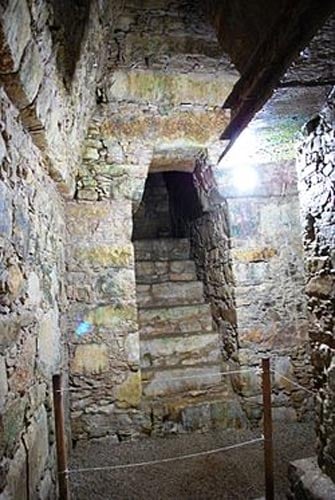
The burial chamber and the stairway leading into it. ( CC BY-SA 3.0 )
A Burial Full of Treasures
When the researchers opened the tomb in the 1994, they were shocked. In front of them appeared the most incredible discovery they had ever made. In the heart of the historical city of Palenque they found an incredibly beautiful tomb. As Arnoldo González Cruz described his first impressions after making an opening to the chamber:
”Through the perforation, we could look into a perfectly vaulted chamber measuring 3.80 x 2.50 meters, most of the surface of which was occupied by a rectangular limestone sarcophagus. To the south, we could make out the main door of the chamber, as well as five steps that gave access to it. Upon thus discovering the main access to the tomb through the perforation we had made, we assumed that the sealed doorways at the ends of the gallery might take us to it by locating an access gallery. Thus, we decided to explore the gallery’s southeastern and southwestern doorways, since they displayed the same orientation as the main access to the tomb. After 15 days of explorations, we were able to ascertain that the doorways led to inner, ascending stairways which originally gave access to a construction built above. Through the use of test pits, we tried to locate the access to the chamber from the outside, but we had to abandon this endeavor after having excavated down for eight meters with negative results.”
Inside the tomb, archaeologists discovered a sarcophagus. Inside the coffin they found the remains of a noblewoman and other objects covered with red cinnabar powder.
The skeleton was decorated with an impressive collection of pearls, jade, shells, and bone needles. The skull was originally enhanced with a diadem made of flat circular jade beads. The woman’s chest was covered with flat obsidian and jade pieces as well. The face was covered with a funeral mask made of malachite pieces. Inside the sarcophagus, archaeologists also discovered a seashell with a small limestone figurine inside of it.
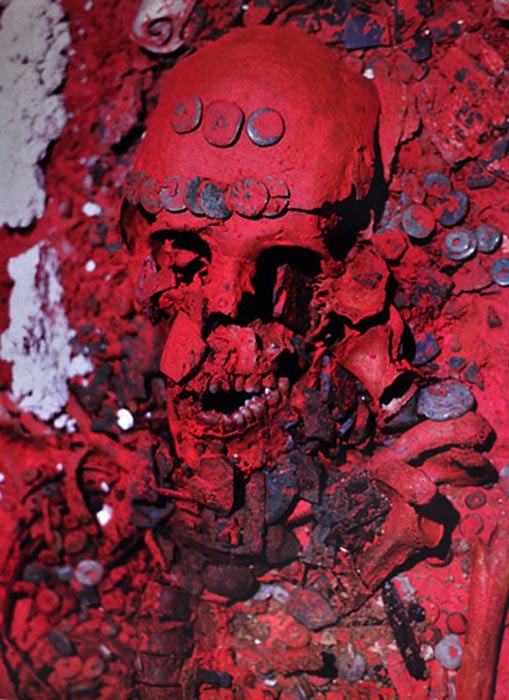
Skeleton of the Red Queen. ( ontheroadin.com)
Apart from the female remains, a man was also buried inside the chamber. He is thought to have been her servant, and it is assumed he was sent to the afterlife with his queen.
Who Was the Red Queen?
The researchers called the woman found in the tomb the ”Red Queen”. Her remains were transported to the laboratory of the Mexican National Institute of Archaeology and History. Researchers found that she lived between 600 and 700 AD – a date suggested by the pottery discovered inside the tomb.
Analysis included carbon 14 testing and facial reconstruction. With this, the team found that the woman died when she was about sixty years old and had osteoporosis. Moreover, her diet was revealed to be based mostly on meat. She also had very healthy teeth, something that was not typical for the Maya people during that time. Although the burial was a magnificent discovery, the researchers couldn’t hide their disappointment: Inside the chamber they did not find any inscription or indication which could allow them to confirm her name.
The researcher Arnoldo Gonzalez Cruz believes that she was Tz’ak-bu Ajaw, the wife of Pakal and the grandmother of the last Mayan king. Currently the team is looking for the tombs of Pakal and his sons. Comparing the DNA of the woman with Pakal’s sons could help them with this hypothesis.
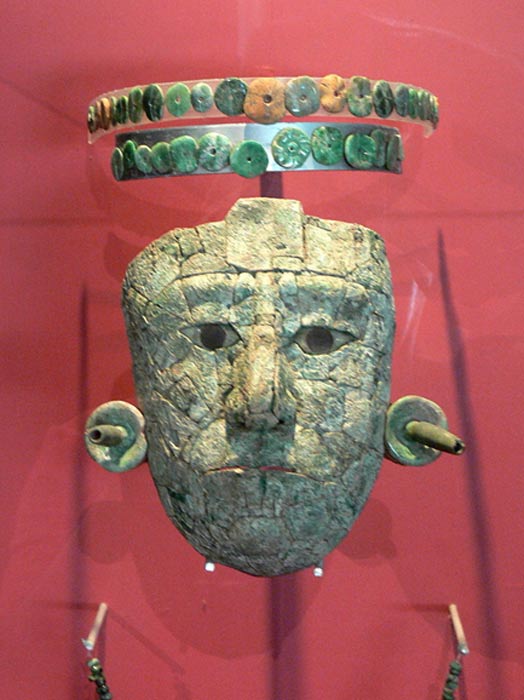
Mask of the Red Queen from the tomb found in Temple XIII The diadem and mask are made of pieces of jade and malachite. ( Wolfgang Sauber/CC BY SA 3.0 )
The Legendary City of Palenque
Palenque was called Lekamha by the Maya people. This word means ”Big Water”. It was an impressive city which was built around the 3rd century BC and was inhabited until the end of the 8th century AD. This was a political center and the capital for many male and female rulers. Now the site is located in a part of the state of Chiapas. It covers up to 2.5 square kilometers (1 square mile). Archaeologists claim that only 10% of the ancient city of Palenque has been explored so far.
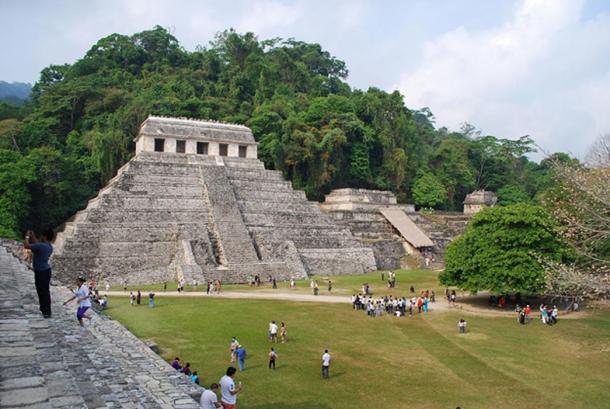
View of Temple XIII and Temple of Inscriptions from the Palace at Palenque, Chiapas, Mexico. (CC BY-SA 2.5 )
Apart from the tomb of the Red Queen, another important discovery has been the tomb of K’inich Janaab Pakal, also known as Pacal the Great. He ruled during the 7th century AD and was buried in the temple called The Temple of the Inscriptions.
An Eternal City and its Unidentified Queen
Palenque continues to be one of the most famous ancient cities and one of the most fascinating places connected with the Maya civilization. Some people believe that the location has a special energy source too. Thousands of people travel there to explore the secrets of the Maya culture, to experience an adventure amongst the magnificent ruins, and to enjoy the unique atmosphere of a city where women wrote their own history.
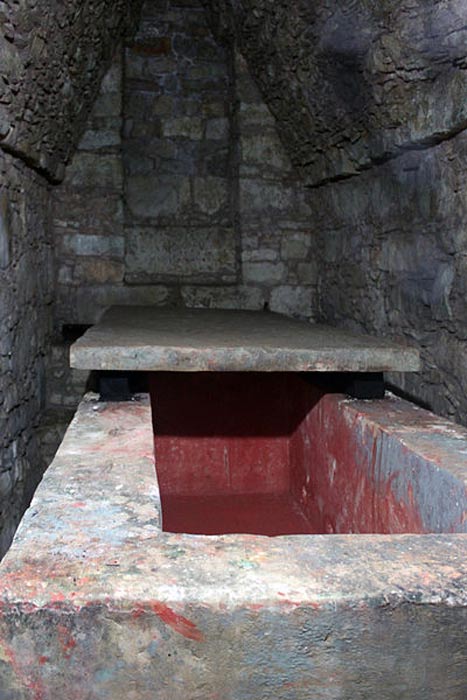
Tomb of the Red Queen (Temple XIII) in Palenque, Chiapas, Mexico. ( CC BY 3.0 )
The remains of the Red Queen returned to Palenque in June 2012. She couldn’t be reburied in her original tomb due to the high humidity inside the pyramid. However, she was reburied in a different location close to her ancient home.
In July, 2018, the funeral finery of the Red Queen, including her features, burial jewelry and death mask were restored by archaeologists and historians, and put on display in Mexico City.